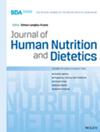Home Enteral Tube Feeding in Children and Young People: A Review of Current Literature on Optimum Frequency and Mode of Dietetic Assessment and Monitoring in the Community Setting
Abstract
Introduction
Home enteral nutrition (HEN) is the provision of nutrition support administered via feeding tube designed to support growth and development when oral feeding is not possible. Post-hospital discharge, patients are provided with all necessary enteral feed and equipment for continued nutrition support in the community. Specialist HEN dietitians, typically undertake assessment and monitoring of growth, tolerance and correct administration of HEN within the community. However, national clinical guidelines specific to the assessment and monitoring of children in receipt of HEN do not exist.
Aim
This review sought to identify current evidence on (1) optimum frequency of HEN dietetic reviews and (2) ideal mode of review, including explicit criteria on how this might alter based on the child's age, nutritional parameters and clinical condition.
Methods
Two electronic databases, CINAHL and Medline were screened to identify relevant articles published between February 2006 and June 2022 that met the inclusion criteria, using a PEO (population, exposure, outcome) search strategy. The search yielded 1677 articles, these were screened by title, abstract and full text for suitability for inclusion within the final review. A total of 1674 articles were excluded, yielding three articles considered suitable for this review.
Results
Recommendations on frequency and mode of assessment and monitoring of this patient group varied between the three articles. There was a lack of consensus on ‘ideal’ dietetic care, and explicit guidance on how this may alter based on clinical presentation was not provided.
Conclusions
There is a paucity of evidence on the most effective and efficient assessment and monitoring of children in receipt of HEN. Evidence-based and person-centred clinical guidelines are needed to inform commissioners and healthcare professionals on the optimum monitoring of this patient group. Future research should explore children, family and clinician expectations and needs, with pertinence to patient age and primary diagnosis, type and adequacy of feed used, feed tolerance, tube-related complications and treatment, hydration status, biochemical monitoring, the use of telehealth platforms, obtaining anthropometric measurements and the effects of drug/nutrient interactions.

 求助内容:
求助内容: 应助结果提醒方式:
应助结果提醒方式:


